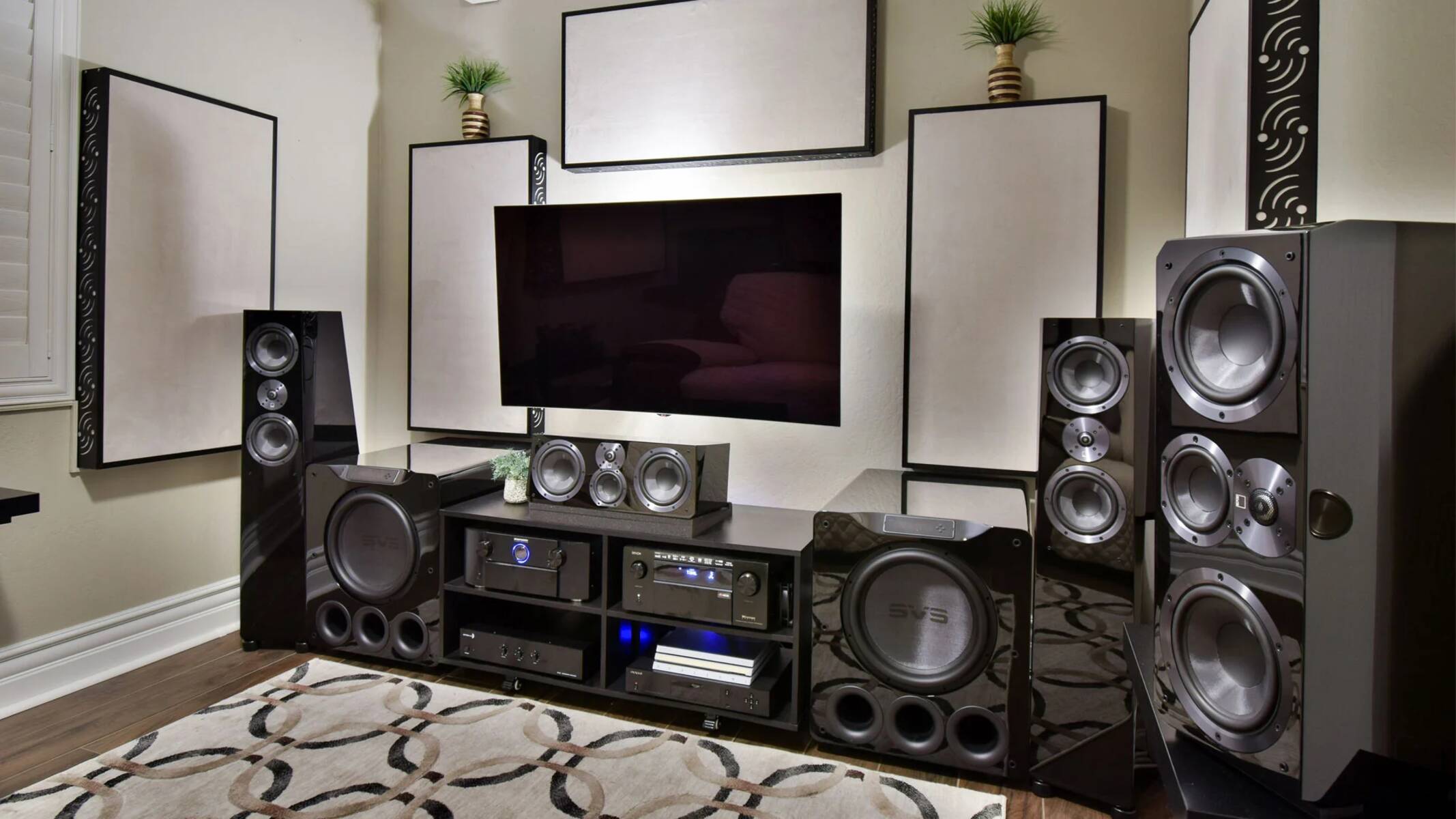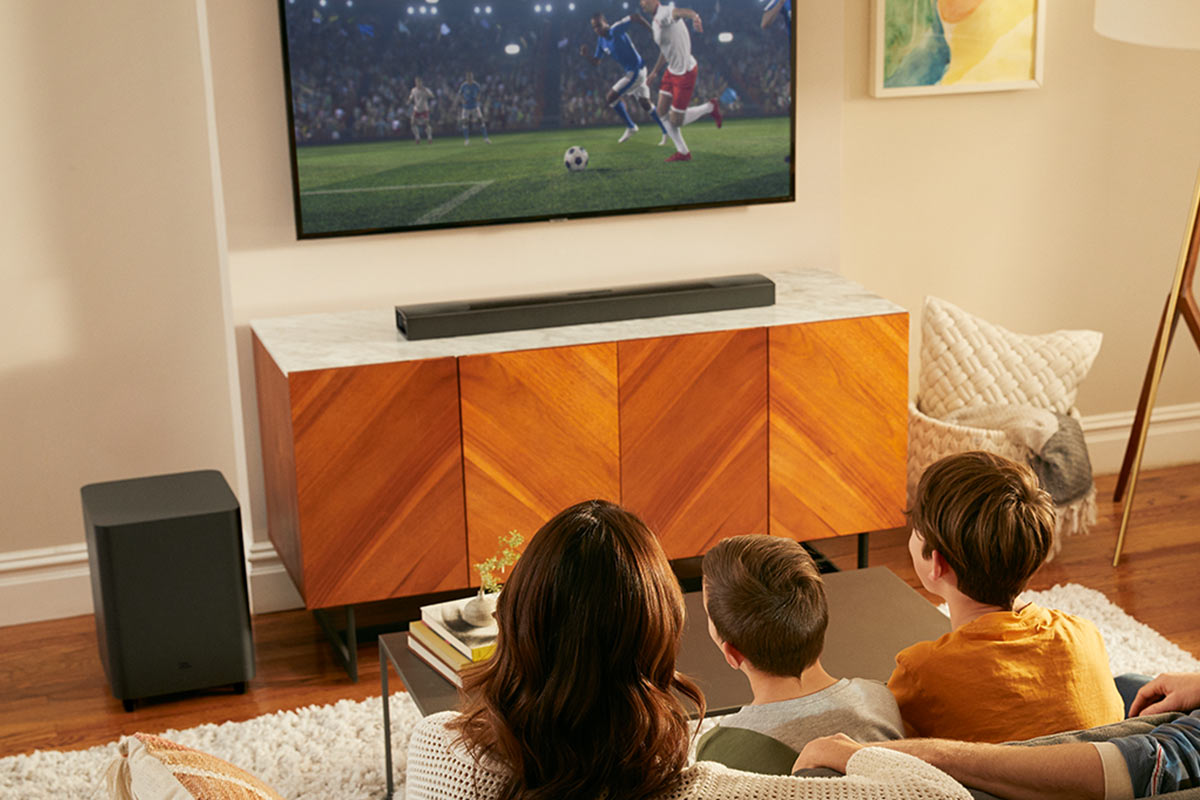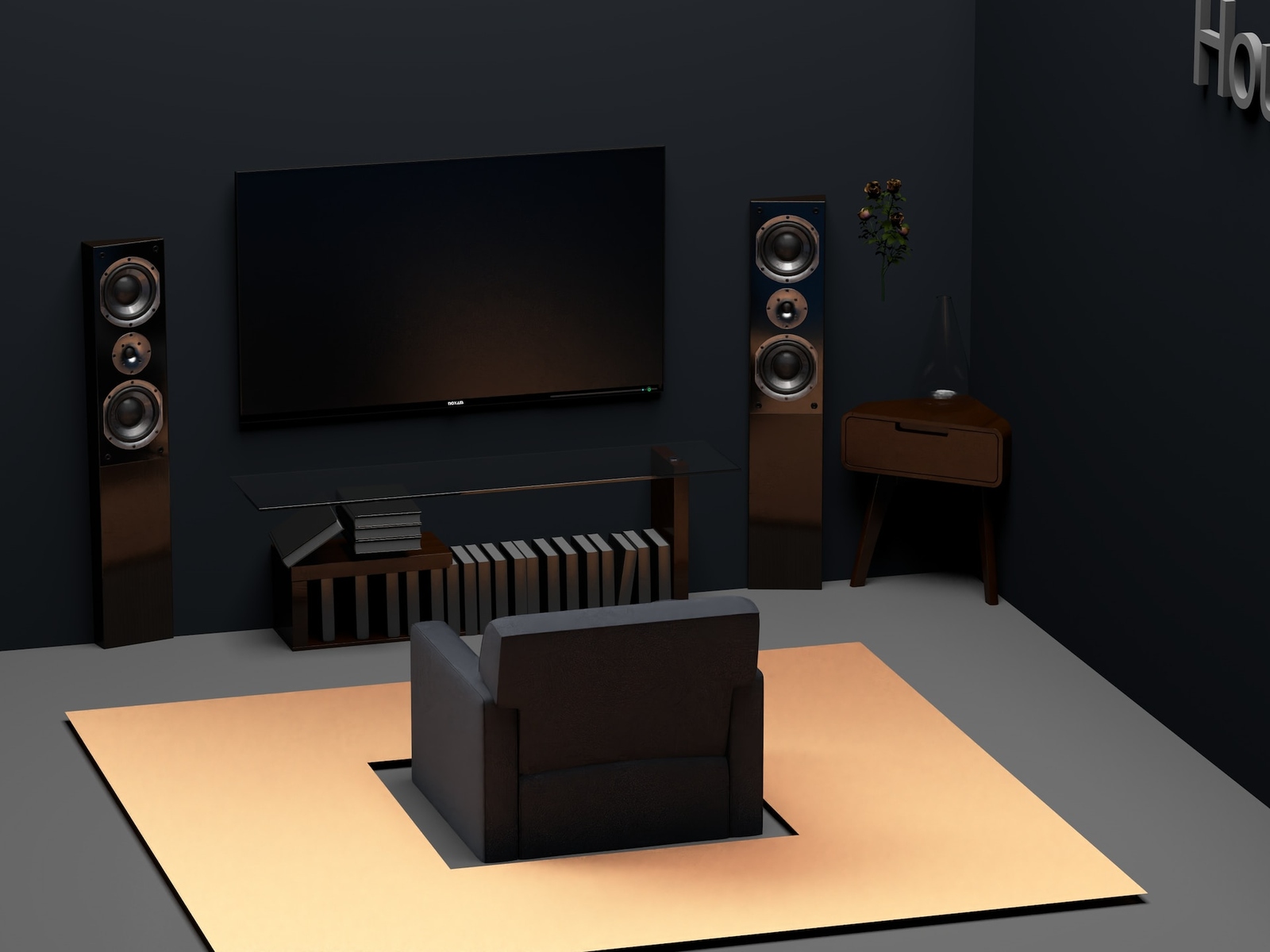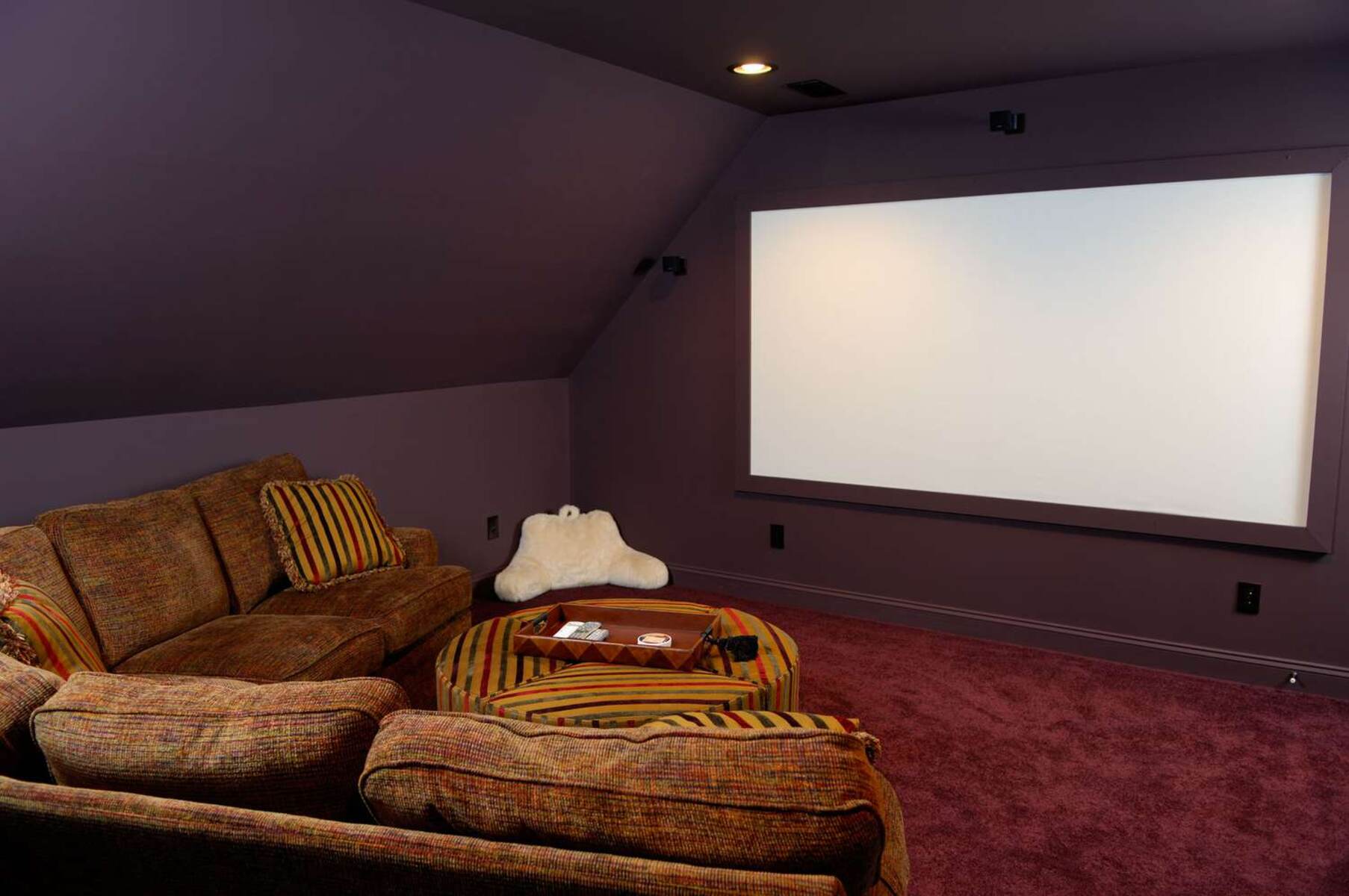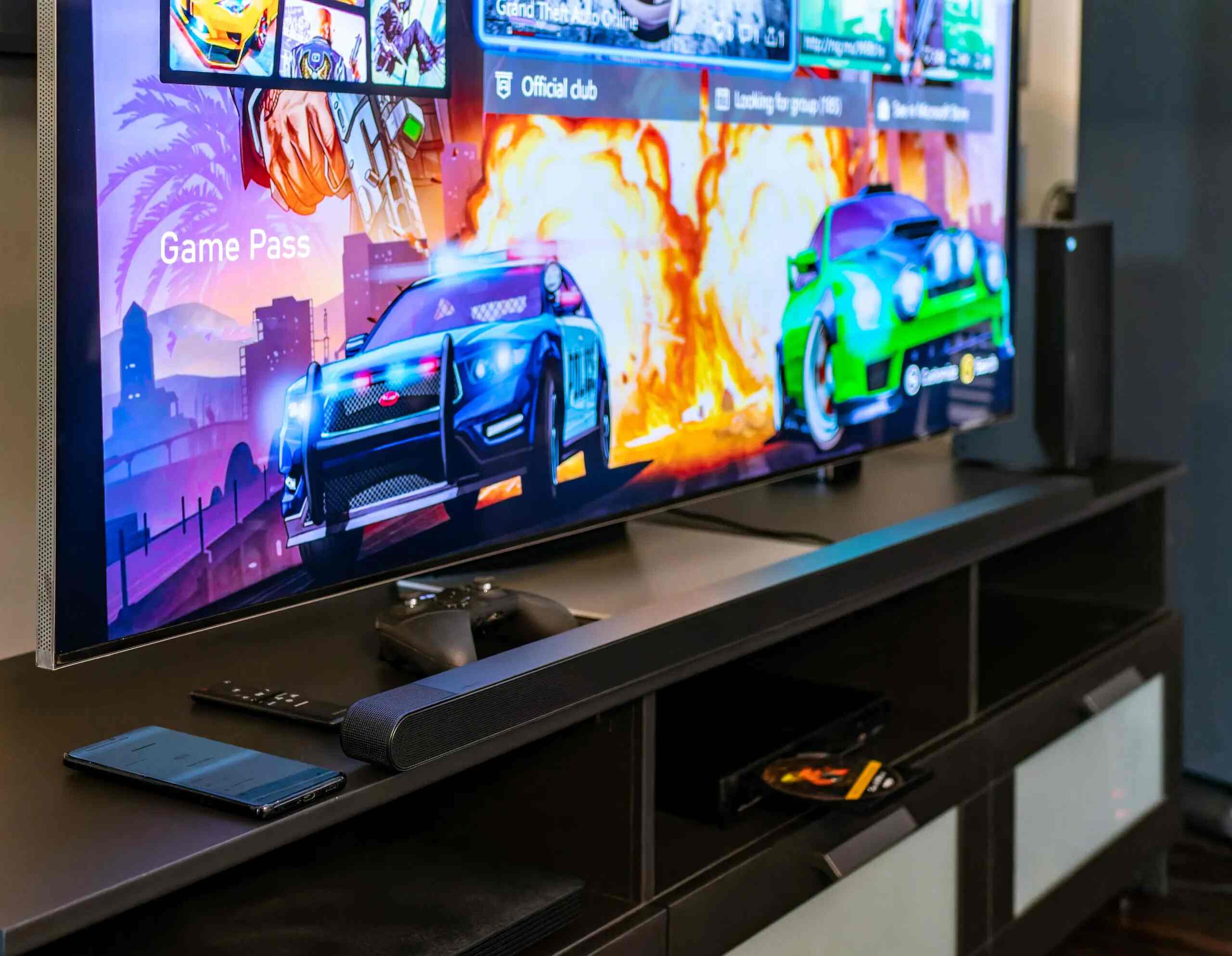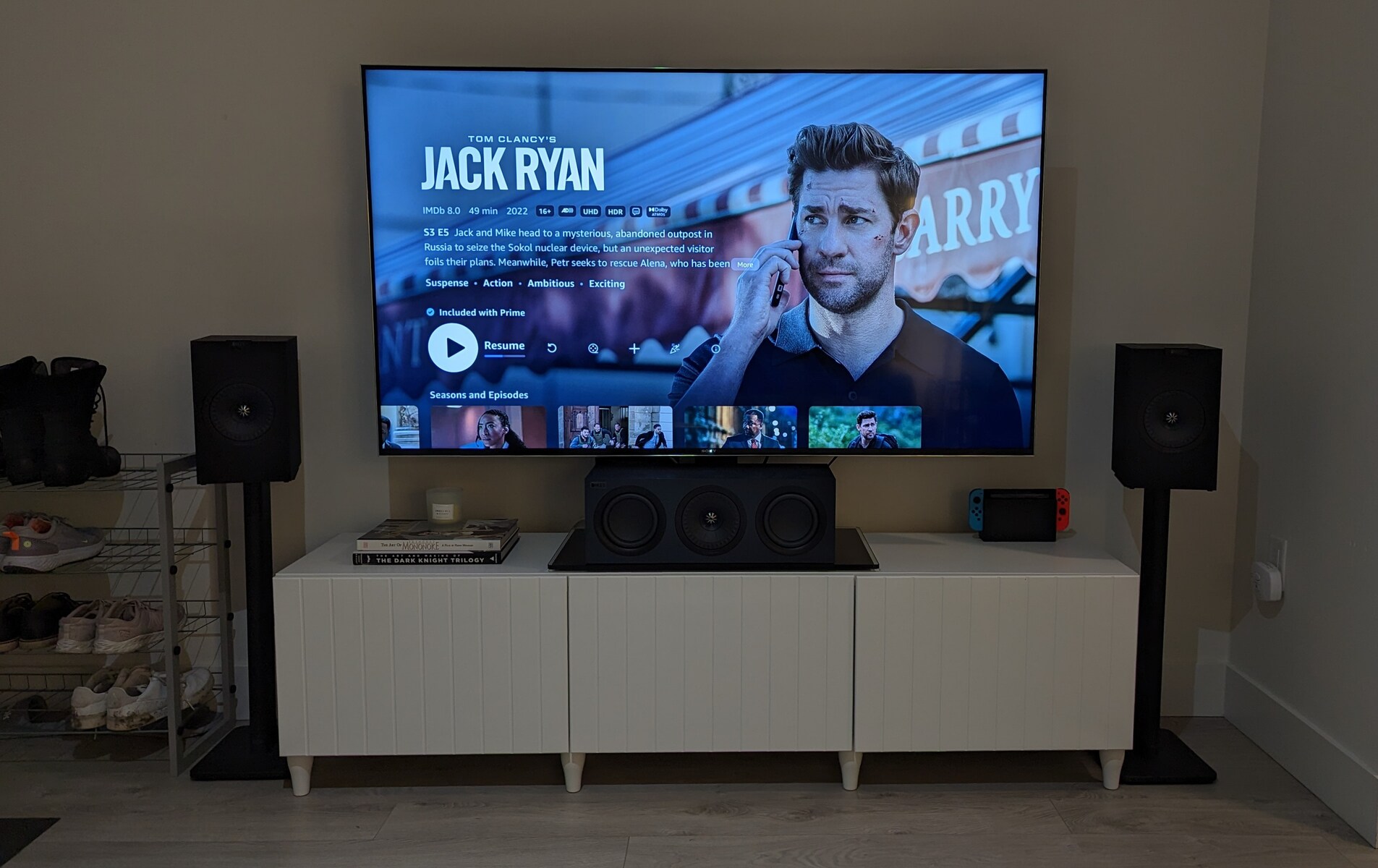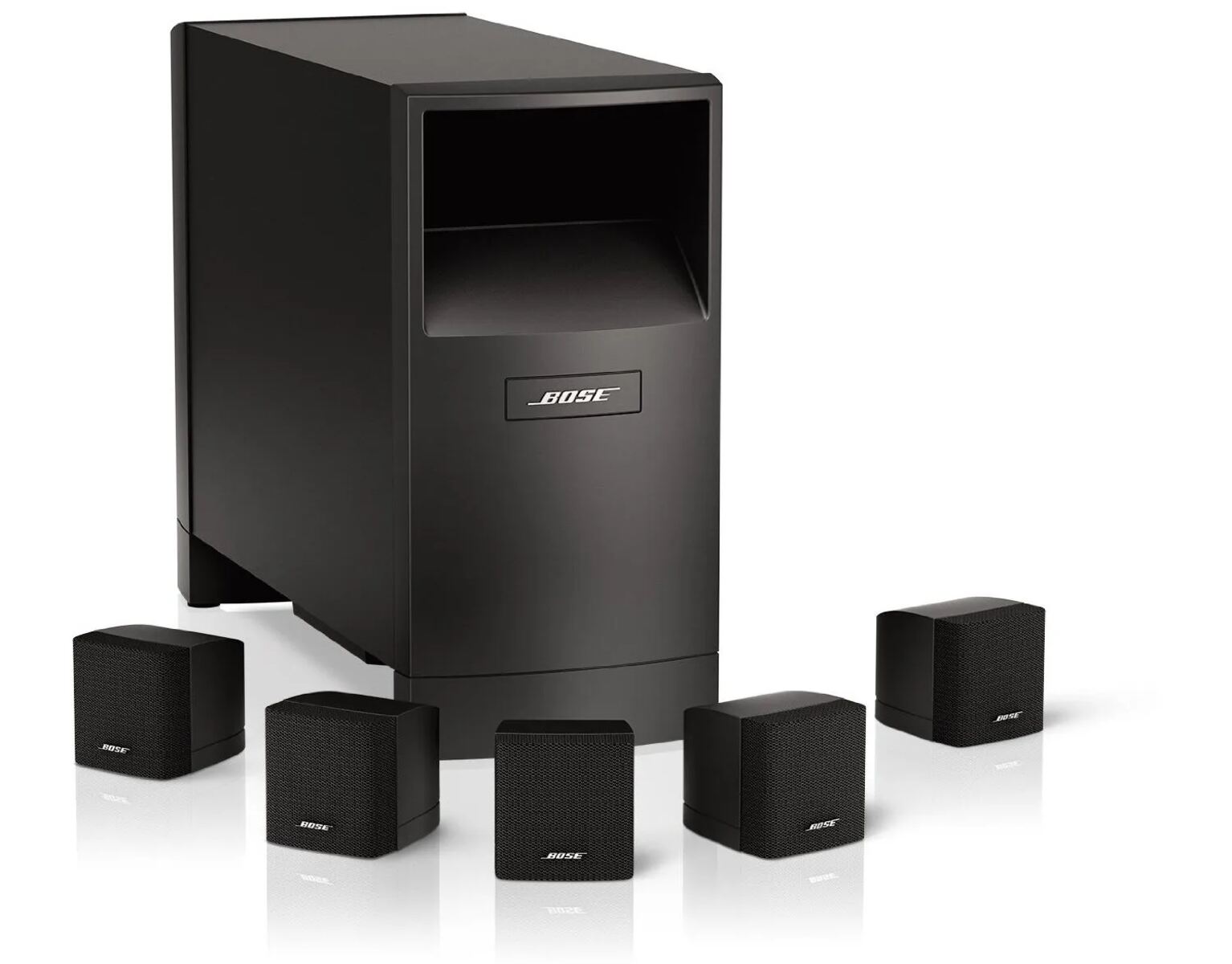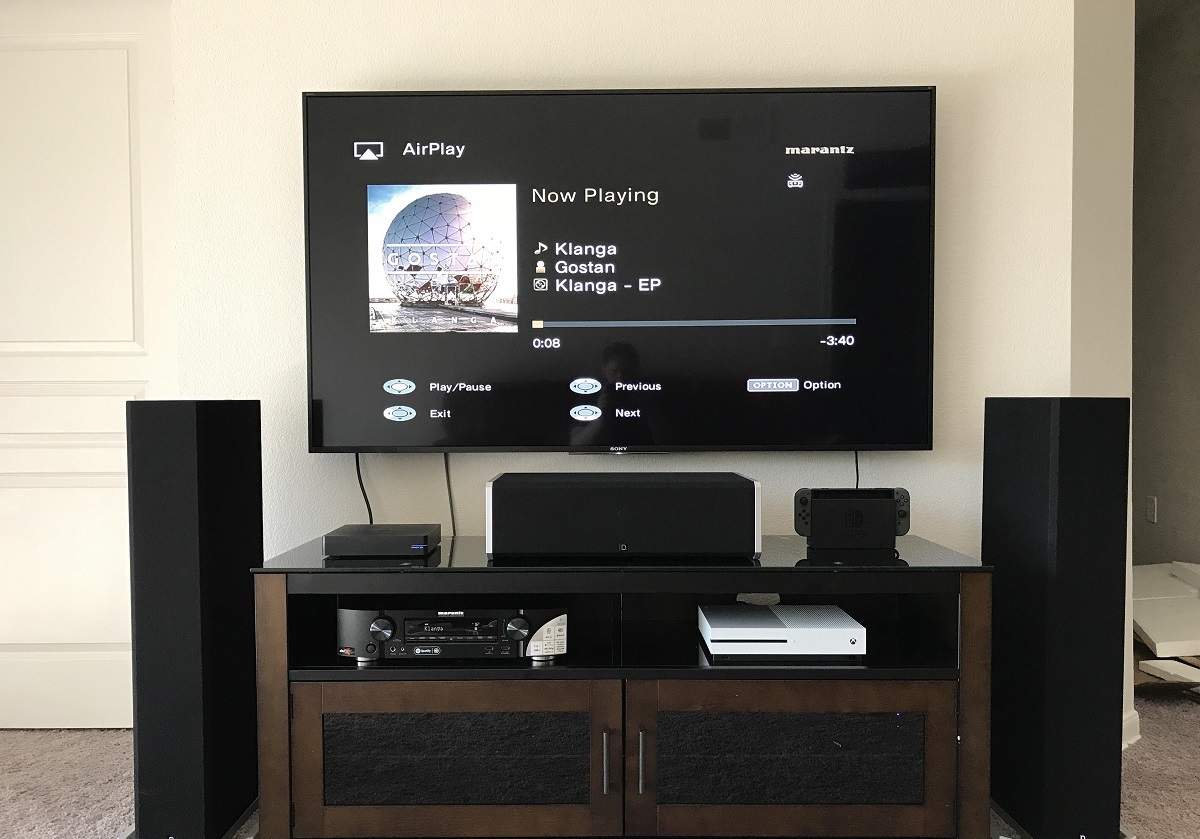Introduction
Welcome to the world of surround sound! When it comes to creating a truly immersive audio experience, nothing beats a high-quality RCA surround sound system. Whether you’re a movie buff, a music lover, or a gaming enthusiast, connecting your RCA surround sound system can take your entertainment to the next level. With the right cables and a few simple steps, you’ll be able to enjoy rich, dynamic sound that envelops you from every direction.
In this guide, we’ll walk you through the process of hooking up your RCA surround sound system. We’ll cover everything from determining your audio source to connecting the cables and setting up your surround sound receiver. By following these steps, you’ll be able to enjoy the full potential of your RCA surround sound system in no time.
Before we get started, it’s important to note that while the specific connections may vary depending on your setup and equipment, the general principles remain the same. By understanding the basic concepts of connecting your RCA surround sound system, you’ll be able to adapt the instructions to suit your specific needs.
Now, let’s jump right in and start connecting your RCA surround sound system!
Step 1: Determine Your Audio Source
The first step in setting up your RCA surround sound system is to determine the audio source you will be using. This could be a TV, a DVD or Blu-ray player, a gaming console, or any other device that outputs audio. Identifying your audio source is crucial as it will help you understand what cables and connections you will need for the setup.
Start by examining your audio source and identifying the available audio output options. Common audio output options include HDMI, digital optical, and analog audio outputs (such as RCA or 3.5mm audio jacks). Check the back or side of your audio source for these output ports.
If you’re not sure which audio output to use, consult the user manual or online resources for your specific device. These resources will provide detailed information on the available audio outputs and their functions.
Additionally, consider the audio format compatibility of your audio source. Some devices may support Dolby Digital or DTS surround sound formats, which will allow you to enjoy a more immersive audio experience. Make sure your audio source is capable of outputting the desired audio format to fully utilize your RCA surround sound system.
Once you have determined your audio source and identified the available audio output options, you’re ready to move on to the next step. In the following steps, we will guide you through the process of connecting your audio source to your surround sound system using RCA cables.
Step 2: Gather the Necessary Cables and Equipment
Before you can connect your RCA surround sound system, you’ll need to gather the necessary cables and equipment. Here’s a list of items you’ll need:
- RCA cables: These cables are essential for connecting your audio source to your surround sound receiver. Make sure you have enough RCA cables to connect all the relevant audio outputs on your source device.
- Surround sound receiver: This is the heart of your RCA surround sound system. Ensure that you have a compatible receiver that supports RCA inputs and outputs.
- Speakers: Depending on your specific setup, you may need multiple speakers to complete your surround sound system. Check the specifications of your receiver to determine the number of speakers required.
- Subwoofer (optional): If you want to enhance the bass and low-frequency sounds, consider adding a subwoofer to your setup. Not all surround sound systems include a subwoofer, so this is optional.
- Source device: This could be your TV, DVD player, gaming console, or any other device that you identified as your audio source in Step 1.
- Power cables: Ensure that you have the necessary power cables to connect your surround sound receiver and speakers to a power source.
- Additional cables and accessories: Depending on your specific setup and equipment, you may need additional cables such as HDMI or digital optical cables. Refer to the user manuals of your devices to determine if any additional cables are required.
Once you have all the necessary cables and equipment ready, you can proceed to the next step, which involves locating the audio output on your source device.
Step 3: Locate the Audio Output on Your Source Device
In this step, you need to locate the audio output on your source device. The audio output is where you will connect the RCA cables to send the audio signal to your surround sound system.
Start by examining the back or side of your source device. Look for audio output ports that are labeled or marked as “Audio Out” or “Audio Output.” Common audio output options include RCA jacks (red and white), digital optical ports, and HDMI ARC (Audio Return Channel) ports.
If you’re connecting a TV as your audio source, check for audio output options such as HDMI ARC, digital optical, or RCA. Some newer TVs may have multiple audio output options, so be sure to select the one that is compatible with your surround sound receiver.
If you’re using a DVD or Blu-ray player, gaming console, or other devices, refer to the user manual or check the manufacturer’s website for information on the audio output options and their locations.
Once you have located the audio output on your source device, you’re ready to proceed to the next step, where you’ll connect the RCA cables to the audio output.
Step 4: Connect the RCA Cables to the Audio Output
Now that you have located the audio output on your source device, it’s time to connect the RCA cables. These cables will carry the audio signal from your source device to the surround sound receiver.
If your source device has RCA output jacks, you’ll need to connect the RCA cables accordingly. The RCA cables consist of red and white connectors, with each color representing the right and left audio channels.
Begin by inserting the red connector of the RCA cable into the corresponding red RCA output jack on your source device. Similarly, insert the white connector into the white RCA output jack. Ensure that the connectors are securely plugged in to avoid any loose connections or audio disturbances.
If your source device does not have RCA output jacks, but instead has a digital optical or HDMI ARC output, you will need to use the appropriate cables for those connections. Refer to the user manual of your source device for instructions on how to connect the cables in these situations.
It’s important to note that some devices may have multiple audio output options, such as HDMI ARC and digital optical. Select the audio output option that works best for your setup and is compatible with your surround sound receiver.
Once you have connected the RCA cables or other appropriate cables to the audio output of your source device, you can proceed to the next step, where you will connect the other end of the RCA cables to the surround sound receiver.
Step 5: Connect the Other End of RCA Cables to the Surround Sound Receiver
With the RCA cables connected to the audio output of your source device, it’s time to connect the other end of the cables to the surround sound receiver. This will allow the audio signal to be transmitted from the source device to the speakers.
Start by locating the audio input ports on the back of your surround sound receiver. These ports are usually labeled or color-coded to indicate the corresponding channels. Look for the audio input ports that match the color of the RCA cables you are using – typically red and white.
Insert the red RCA connector into the red audio input port on the surround sound receiver, and insert the white connector into the white audio input port. Ensure that the connectors are securely plugged in to ensure a stable connection.
If your surround sound receiver has multiple inputs, make sure to connect the RCA cables to the appropriate input that corresponds to the source device you’re using. For example, if your RCA cables are connected to the audio output of your TV, connect them to the corresponding input labeled “TV” or “Aux In” on the receiver.
Repeat this process for each RCA cable connection you need to make, ensuring that the colors match and the connectors are properly inserted into the correct audio input ports on the receiver. If you are also using a subwoofer, check if there is a dedicated RCA input for it on the receiver and connect the cable accordingly.
Once you have connected the RCA cables to the appropriate audio input ports on the surround sound receiver, you can move on to the next step, which involves setting up your surround sound receiver.
Step 6: Set Up Your Surround Sound Receiver
After connecting the RCA cables to your surround sound receiver, it’s time to set up the receiver. This step involves adjusting the settings on the receiver to ensure optimal audio performance and compatibility with your audio source.
Start by connecting the surround sound receiver to a power source using the provided power cable. Make sure the receiver is powered on and ready for setup.
Next, refer to the user manual or on-screen menu of your surround sound receiver to navigate the setup options. Every receiver may have slightly different menus and settings, but the general steps remain similar.
Some key setup options to consider include:
- Speaker configuration: Determine whether you have a 2.1, 5.1, or 7.1 speaker setup, and set the speaker configuration accordingly. This ensures that the receiver sends the audio signals to the correct speakers.
- Audio input selection: Select the appropriate input on the receiver that corresponds to the connected RCA cables. For example, if your RCA cables are connected to the “TV” input on the receiver, select the “TV” input in the setup menu.
- Audio output settings: Adjust the audio output settings on the receiver to match your preferences. This includes options for tone control, equalization, and surround sound modes.
- Calibration and speaker test: Some surround sound receivers offer automatic calibration systems that optimize the audio performance based on the room and speaker setup. Follow the on-screen instructions to run the calibration process and test the speakers.
Refer to the user manual of your specific surround sound receiver for more detailed instructions on the setup process. It’s important to take your time and ensure that all the settings are configured correctly to achieve the best audio experience.
Once you have completed the setup process on your surround sound receiver, you’re almost ready to start enjoying your RCA surround sound system. The next step involves testing the connection and adjusting any necessary settings.
Step 7: Test the Connection and Adjust Settings
With everything connected and set up, it’s time to test the connection and adjust any necessary settings to ensure the best audio performance from your RCA surround sound system.
Start by turning on your source device, whether it’s a TV, DVD player, or gaming console. Make sure the device is outputting audio to the connected surround sound receiver.
Next, play a test audio or video file that allows you to hear sound from all the speakers in your surround sound system. This will help you identify any issues with the speaker placement or audio signal routing.
As the audio plays, pay attention to the sound coming from each speaker. Ensure that each speaker is producing sound and that the audio is balanced across all the speakers. Adjust the balance and volume levels on the surround sound receiver if needed.
If you notice that the audio is not playing from certain speakers, double-check the connections to ensure that the RCA cables are securely plugged into the correct audio input ports on the receiver. Additionally, verify that the speaker wires are connected properly to the receiver and the speakers.
During this testing phase, you may also want to explore the various audio settings and options on your surround sound receiver. This includes adjusting the surround sound mode, equalization settings, and any other audio enhancements available. Experiment with these settings to find the configuration that suits your preferences and enhances your audio experience.
If you’re experiencing any issues or are unsure about certain settings, refer to the user manual of your surround sound receiver or consult the manufacturer’s website for troubleshooting tips and guidelines.
Once you are satisfied with the connection, sound quality, and settings adjustments, you can move on to the final step: enjoying your RCA surround sound system!
Step 8: Enjoy Your RCA Surround Sound System
Congratulations! You have successfully set up your RCA surround sound system and completed all the necessary steps. Now it’s time to sit back, relax, and immerse yourself in the rich, cinematic audio experience that your surround sound system provides.
Whether you’re watching a movie, listening to music, or playing video games, the enhanced audio quality and surround sound capabilities will elevate your entertainment to a whole new level. You’ll be able to hear every detail, from the crisp dialogue to the thunderous explosions, as if you were right in the midst of the action.
Don’t forget to take advantage of the different audio settings and modes available on your surround sound receiver. Experiment with different surround sound modes, equalizer settings, and audio enhancements to customize the sound to your liking.
When using your RCA surround sound system, ensure that the volume levels are set at a comfortable level to prevent any potential damage to your hearing and to maintain a pleasant listening experience.
Lastly, if you encounter any issues or have questions about your RCA surround sound system, refer to the user manual, manufacturer’s website, or reach out to their customer support for assistance. They will be able to provide guidance and troubleshooting tips specific to your system.
Now that you’ve completed the setup and are ready to enjoy your RCA surround sound system, sit back, relax, and let the immersive audio transport you to a whole new world of entertainment.
Conclusion
Setting up your RCA surround sound system may seem daunting at first, but by following the step-by-step guide outlined in this article, you can easily connect and configure your system for an incredible audio experience.
Starting from determining your audio source and gathering the necessary cables and equipment, to locating the audio output on your source device and connecting the RCA cables to the audio output, each step plays a crucial role in ensuring a successful setup.
Once you’ve connected the other end of the RCA cables to the surround sound receiver, it’s important to properly set up the receiver by configuring the speaker settings and audio input options. Testing the connection and adjusting the settings allow you to fine-tune the audio performance and balance across all the speakers.
Finally, it’s time to enjoy your RCA surround sound system. Whether you’re watching movies, listening to music, or playing games, the immersive and high-quality audio will greatly enhance your entertainment experience.
Remember to refer to the user manual or manufacturer’s resources if you encounter any issues or need further assistance during the setup process. They will provide specific instructions and troubleshooting tips for your surround sound system.
Now that you have successfully set up your RCA surround sound system, sit back, relax, and immerse yourself in the captivating soundscapes that will bring your entertainment to life.







